Table of contents
Pak-Choi ( Brassica rapa ssp. chinensis) or Bok choy is a close relative of Chinese cabbage. It is usually eaten steamed, but can also be eaten raw - preferably in organic quality.
Use of Pak Choi in the kitchen:
The relationship with Chinese cabbage is also evident in its use. In the kitchen, it ranges from adding it raw to salads to using it as a vegetable in soups and stews to wok dishes. Pak Choi cabbage (Chinese leaf cabbage or Chinese mustard cabbage) is one of the most popular vegetables in Asian cuisine, e.g. in China, Korea, Thailand and Japan. But there is also a significant increase in the consumption of the low-calorie cabbage in Europe.
The vegetable has a mild, spicy, nutty and slightly mustard-like taste, which is why it is also called Chinese mustard cabbage. In contrast to other types of cabbage, bok choy only tastes very subtly of cabbage. This is a characteristic that makes it a possible alternative for people who have a certain aversion to cabbage.
Before use, cut off the stalk so that the individual leaves come off. Depending on the quality and pre-treatment, remove the outermost leaves and wash the rest. Baby pak choi can simply be cut in half, including the stalk, as it is very tender.
How do you cook Pak Choi? Pak Choi tastes good when gently steamed, boiled, fried or grilled. If you want to eat it cooked, you should keep the cooking time as short as possible (2-3 minutes), otherwise the bite and appearance will suffer, as will heat-sensitive vitamins and nutrients. When grilled, Pak Choi is used whole.
Typically, the cabbage ends up in wok dishes, such as fried rice or fried noodles. It goes well with various other vegetables (e.g. sweet peppers, carrots, spring onions), mushrooms (e.g. button mushrooms, shiitake mushrooms) and tofu. Cabbage is also often used as an ingredient in Asian noodle soups (ramen), miso soups, steamed buns (bao) and steamed dumplings (baozi). Briefly sautéed, it makes an excellent salad ingredient. But it also tastes fabulous just sautéed with a little garlic, ginger and soy sauce. Other preparation methods include vegetarian and vegan stews (e.g. with potatoes), spring rolls, curries and pasta dishes - as part of the sauce or as a vegan lasagne filling. In some recipes , chard and spinach can easily be substituted with pak choi - this gives the dish an exotic touch. In addition to the spices mentioned, chili, curry, coriander and lemongrass can be added to the flavor.
Questions like Can you eat Pak Choi raw?, Is Pak Choi edible raw? or Is Pak Choi poisonous raw? can be answered as follows: Pak Choi can be eaten raw and it is not poisonous. It is suitable raw as a basis for salads or you can mix it with other leaf salads. Cucumbers, avocados, sweet peppers and spring onions go particularly well in a raw salad; salads with tofu, walnuts and a sweet and spicy dressing are also popular. Raw Pak Choi is also used as a filling for summer rolls.
Vegan recipe for spicy pak choi salad (raw):
Ingredients (for 4 people): 400 g pak choi (raw, organic), 3 spring onions, 1 mango, 1 clove of garlic, 1 chili pepper, 5 g ginger, 1 lime, 20 ml sesame oil, 1-2 tsp miso paste, 1-2 tbsp soy sauce, 2 tbsp rice vinegar, 1-2 tbsp agave syrup, some sesame seeds.
Preparation: Rinse the pak choi, remove the outer leaves if necessary and cut the rest into thin strips. Clean the spring onions and cut into fine rings. Peel, core and dice the mango. Finely chop the garlic clove, chili pepper and ginger and drizzle with a little lime juice. For the dressing, put the sesame oil, miso paste, soy sauce, rice vinegar and agave syrup in a bowl and mix (for a healthier version with less salt, reduce the amount of miso paste and soy sauce). Add finely chopped garlic, chili and ginger and mix. Put the pak choi, mango and spring onions in a bowl and mix with the miso dressing. Serve the vegan pak choi salad and garnish with some sesame seeds.
Vegan recipes with pak choi (raw) can be found under the note: " Recipes that have the most of this ingredient ".
| Not only vegans or vegetarians should read this: Vegans often eat unhealthily. Avoidable nutritional errors. |
Shopping - where to buy Pak Choi?
In well-stocked supermarket branches (such as Coop, Migros, Denner, Lidl, Rewe and Edeka) raw Pak Choi is often available all year round. Other supermarkets (e.g. Spar, Aldi, Hofer, Billa) offer it during special weeks, smaller stores (e.g. Volg) usually do not offer it at all. In organic supermarkets (e.g. Alnatura, Denn's Biomarkt) the vegetable is of course available in organic quality (bio) - depending on the season. In the DA-CH countries, Bok Choy is in season from April to November, but often comes from the Netherlands or Asia. In addition to the names mentioned above, the following can also be found on packaging or on the shelf: Pak Choi, Pakchoi, Pak Choy, Bok Choi or Bok Choy.
Local Chinese leaf cabbage grown in the field (not in greenhouses) can be found at weekly markets or directly from the farmer. It can also be found in some Asian shops. When buying it, you can recognize fresh pak choi by its lush green, firm leaves, which make a squeaking noise when lightly pressed.
Note: If this is not available, you can use Chinese cabbage as a pak choi alternative.
Storage:
How to store Pak Choi? Since Bok Choy contains a lot of moisture, it should be prepared as fresh as possible. It can be stored in the vegetable compartment of the refrigerator in a damp kitchen towel for up to a week - if possible, it should be used within 1-2 days. If you harvest the plant including the root, you can store it for a few weeks, for example in the cellar.
It is not recommended to freeze pak choi because the leaves tend to become mushy. However, it is theoretically possible after blanching. It tastes much better freshly prepared or raw.
Pak-Choi: Ingredients - Nutritional Values - Calories
Pak-Choi (raw) contains hardly any calories at 13 kcal and is very low in fat at 0.2 g fat per 100 g - making it ideal for weight loss. Proteins are rather low at 1.5 g/100g, comparable to Chinese cabbage (1.2 g/100g) and white cabbage (1.3 g/100g). 1
Raw bok choy is rich in vitamins and minerals. It contains an average of around 63 µg of vitamin K per 100 g (our average), which is 61% of the daily requirement. A similar amount of vitamin K is found in Chinese cabbage (43 µg/100g) and celeriac (41 µg/100g). Swiss chard contains 830 µg/100g, which is more than 18 times that amount. 1 While the USDA shows 46 µg/100g, 1 European nutritional databases such as the ÖNWT (Austrian nutritional table) show a value of 80 µg/100g - which is why we chose the average of 63 µg/100g. However, we assume that the actual vitamin K content of raw bok choy is higher. A study published in 2014 even lists 463 µg/100g, but the original source cannot be verified (as of April 2022). 14
In addition, raw pak choi contains 45 mg of vitamin C per 100 g (56% of the daily requirement). Cauliflower (48 mg/100g) and white cabbage (64 mg/100g) have similar contents. More vitamin C can be found in yellow bell peppers (184 mg/100g). 1
The folate content is 66 µg/100g (33% of the daily requirement). This is similar to that of broccoli (63 µg/100g) and Brussels sprouts (61 µg/100g). Spinach has a higher value at 194 µg/100g. 1
Other notable vitamins in Pak Choi are vitamin A in the form of carotenes and pyridoxine (vitamin B6). In addition, consuming 100 g of Pak Choi covers around 10% of the daily requirement for the macrominerals potassium and calcium as well as for the micronutrient or trace element manganese. 1
The complete ingredients of Pak Choi (raw), the coverage of the daily requirement and comparison values with other ingredients can be found in our nutrient tables. In the article Nutrients explained you will get a detailed insight into the topic.
Dangers - Intolerances - Side effects:
Raw pak choi can cause digestive problems in sensitive people. Brief blanching can help.
There are studies that show a harmful effect of Brassica vegetables on the thyroid, as the glucosinolate progoitrin, a breakdown product of goitrin, reduces thyroid hormone production. However, eating typical portion sizes of raw pak choi is not dangerous for healthy people. The intake of iodine can weaken this effect. 7
Health aspects - effects:
Is Pak Choi healthy? In addition to the ingredients mentioned, untreated Pak Choi also contains health-promoting secondary plant substances such as phenolic acid, flavonoids and glucosinolates (mustard oils). 2 Glucosinolates and their byproducts are generally said to have anti-inflammatory, antibacterial and anti-cancer properties, which increase when the plant is exposed to long periods of light. 3 The phenolic substances contained have a similar spectrum of effects, which includes the following effects: anti-inflammatory, antimicrobial, anti-allergic, anti-carcinogenic. 4 In addition, phenolic compounds have antioxidant activities against chronic diseases; 4 Flavonoids are also said to have a protective effect against arteriosclerosis and cardiovascular diseases. 4,5
Anthocyanins are plant pigments belonging to the flavonoids, which also have strong antioxidant effects. 4 Purple pak choi varieties are rich in these health-promoting plant pigments and are therefore, according to studies, more valuable than the green cultivars. 2,6
Folk medicine - natural medicine:
In traditional Chinese medicine ( TCM), Chinese mustard cabbage is considered a lung and stomach strengthening remedy. It is also said to be beneficial for the onset of a cold, a cough with mucus or sluggish digestion. 8
Occurrence - origin - ecology:
Pak Choi originates from China. 6,9 It is grown on a large scale in its country of origin and throughout Asia. 2 It was gradually introduced to Southeast Asia, America and Europe. 9 However, the main cultivation areas are still in Asia, namely China, Japan and Korea. In Europe, especially in the Netherlands, it is mostly grown in greenhouses. 10
Growing in the garden or as a potted plant:
Pak-Choi prefers loose, sandy loam soil with a high water retention capacity. When sowing directly, the seeds are sown directly into the bed from early to mid-July, about 1 cm deep into the soil. Due to its compact growth, balcony troughs with nutrient-rich soil are also suitable. The seeds need sufficient moisture to germinate. The small plants are separated after about three weeks and placed in the bed at a distance of about 25 cm from each other. If you want to start young plants, start at the end of April - ideally on a warm windowsill or in the greenhouse. The young plants that have been started early can be placed in the bed by the end of July. 11
Bok Choy is ready to harvest around 70 days after sowing. In principle, it can also be harvested earlier, in which case you get what is known as baby Pak Choy. Either you harvest the entire plant (500-1500 g depending on the variety) or you cut off as many leaves from the outside to the inside as you need. 11
Cultivation - Harvest:
Since Pak Choi is a cabbage and therefore a heavy feeder, it needs nutrient-rich soil and regular organic fertilization. It prefers sunny to partially shaded locations and a consistent climate with high humidity. 12 Temperatures around 20 °C are optimal. 10 Pak Choi is not winter hardy (or only partially, depending on the variety) compared to its relative, kale.
As with all types of cabbage, cultivation breaks of 2-4 years should be observed in order to avoid excessive pest pressure and soil-borne diseases.
Ecological aspects:
Organically produced pak choi does not cause any significant damage to soil, air, water and animals and is therefore considered relatively sustainable. With conventional products, the working conditions and the use of chemical fertilizers and synthetic pesticides are particularly critical. 13 Therefore, when buying, make sure you buy regional organic pak choi. Production in (often heated) greenhouses and imports from Asia or America are also viewed negatively.
Possible confusion:
Visually, Pak Choi can be confused with Swiss chard ( Beta vulgaris ssp . vulgaris), but there is no close relationship. There are also similarities to the related Choi Sum (Choy Sum, Choisum = Brassica rapa ssp. parachinensis), which is colloquially called 'False Pak Choi'.
A close relative is Kai-lan (Gai Lan, Chinese broccoli, also known as Brassica alboglabra ( Brassica oleracea var. alboglabra). 15
General information about Bok Choy:
Pak Choi ( Brassica rapa ssp. chinensis) is a subspecies of turnip rape ( Brassica rapa), as is Chinese cabbage ( Brassica rapa ssp. pekinensis). 15 Both belong, as does cabbage ( Brassica oleracea, including white cabbage, red cabbage, Brussels sprouts, broccoli, kohlrabi and many more), to the cruciferous family ( Brassicaceae ).
The Bok Choy plants do not form a closed head, the leaves have short stems and grow in a rosette-like, circular arrangement. The leaf stem is thick and fleshy. Pak Choi varieties differ in taste, color and harvest time. Many varieties have dark green leaves with white leaf veins. Other varieties, such as the Shanghai Pak Choi, have green leaf veins. The leaves of the purple (lilac) varieties are purple-reddish and have light green leaf veins.
Pak Choi: Alternative Names
Other spellings and names by which Pak Choi is known are: Pak Choy, Pak Choi, Pakchoi, Pok Choi, Paksoi, Bok Choy, Bok Choy, Bok Choi, Chinese mustard cabbage or Chinese leaf cabbage. The term rohpak has nothing to do with Pak Choi and pack joy is considered a misspelling.
In English it is known as pakchoi, bok choy, pak choy, buk choy and Chinese cabbage, Chinese chard or Chinese mustard. The term Chinese cabbage is non-specific, as it more often refers to the related Chinese cabbage. Therefore, the more accurate term non-heading Chinese cabbage is also used for bok choy. 9 In the Netherlands it is called paksoi.
Literature - Sources:
Bibliography - 15 Sources
| 1. | USDA United States Department of Agriculture. |
| 2. | Jeon J, Lim CJ, Kim JK, Park SU. Comparative metabolic profiling of green and purple pakchoi (Brassica rapa subsp. chinensis). Molecules. 2018;23(7): E1613. |
| 3. | Park J-E, Kim J, Purevdorj E, Son Y-J, Nho CW, Yoo G. Effects of long light exposure and drought stress on plant "growing" and glucosinolate production in pak choi (Brassica rapa subsp. chinensis). Food Chem. 2021;340: 128167. |
| 4. | Cartea ME, Francisco M, Soengas P, Velasco P. Phenolic compounds in Brassica vegetables. Molecules. 2010;16(1): 251–80. |
| 5. | Mageney V, Neugart S, Albach DC. A guide to the variability of flavonoids in Brassica oleracea. Molecules. 2017;22(2): E252. |
| 6. | Zhang Y, Chen G, Dong T et al. Anthocyanin accumulation and transcriptional regulation of anthocyanin biosynthesis in purple bok choy (Brassica rapa var. chinensis). J Agric Food Chem. 2014;62(51): 12366–76. |
| 7. | Felker P, Bunch R, Leung AM. Concentrations of thiocyanate and goitrin in human plasma, their precursor concentrations in Brassica vegetables, and associated potential risk for hypothyroidism. Nutr Rev. 2016;74(4): 248–58. |
| 8. | Ernaehrungsberatung-wien.at Brokkoli, Chinakohl, Rosenkohl... Wirkung nach TCM und einige Kochideen. |
| 9. | Shen XL, Zhang YM, Xue JY et al. Analysis of genetic diversity of Brassica rapa var. chinensis using ISSR markers and development of SCAR marker specific for Fragrant Bok Choy, a product of geographic indication. Genet Mol Res. 2016;15(2): gmr.15027557. |
| 10. | Pflanzen-lexikon.com Pok-Choi (Brassica rapa ssp. chinensis). |
| 11. | Plantura.garden Pak Choi-Anbau: So gelingt die Aussaat im Garten. |
| 12. | Gemuese-info.de Anbau von Pak Choi im Garten. |
| 13. | Healabel.com Bok Choy Benefits + Side Effects. |
| 14. | Chang CH, Wang YW, Yeh Liu PY, Kao Yang YH. A practical approach to minimize the interaction of dietary vitamin K with "w.......". J Clin Pharm Ther. Februar 2014;39(1): 56–60. |
| 15. | Ren J, McFerson JR, Li R, Kresovich S, Lamboy WF. Identities and relationships among chinese vegetable brassicas as determined by random amplified polymorphic dna markers. Journal of the American Society for Horticultural Science. Mai 1995;120(3): 548–55. |

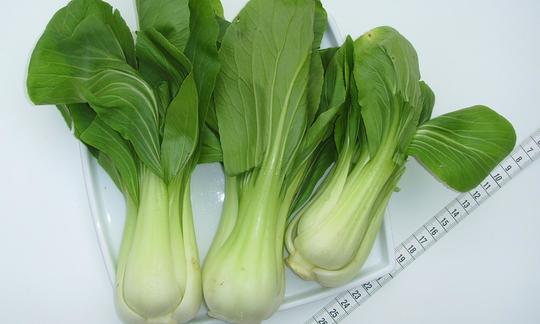

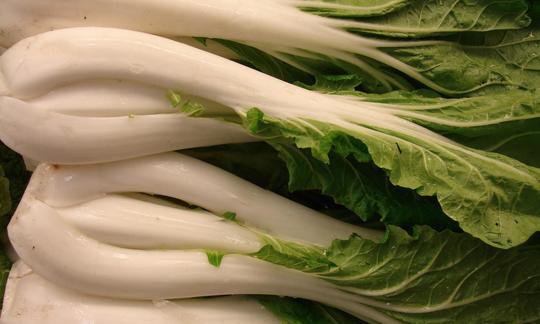

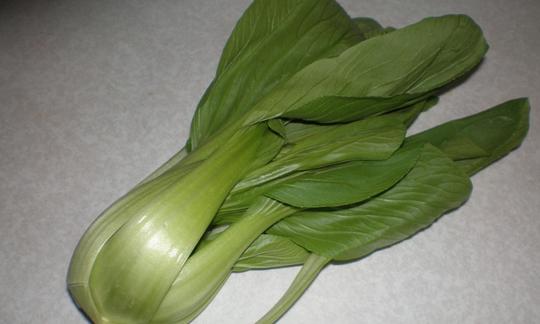

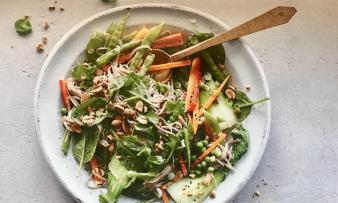
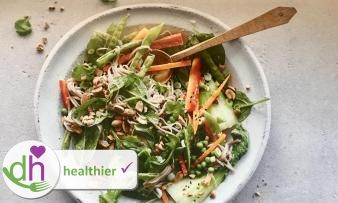
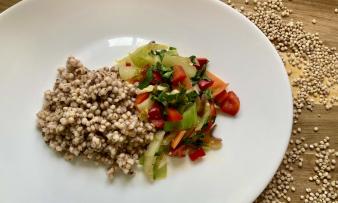





Comments